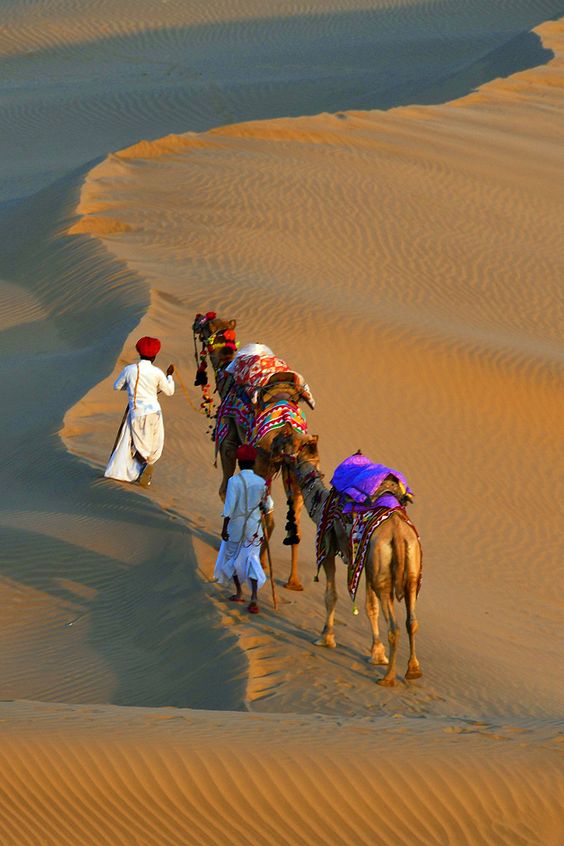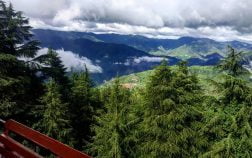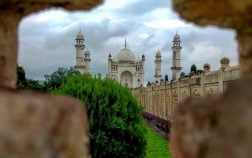
India is an enormous nation, comprising 29 states and 7 association domains. As indicated by the statistics for 2011, the largest state in India is Rajasthan.
Rajasthan spreads around 3,42,238 square kilometers in the north-western piece of the nation, containing 10.41% of the entire place where there is India. As far as its geological zone, the state is similar to the European nation Germany.
Albeit, the biggest in the territory, it is the seventh biggest in the populace. It was shaped in 1949 after Rajputana was united with the Dominion of India. Its biggest city and capital are Jaipur. Other significant urban communities incorporate Udaipur, Ajmer, Bikaner, Kota, and Jodhpur. the largest state in India
Area: 132,139 square miles (342,239 square km)
Population: 68,621,012.
Capital: Jaipur

Location:
Rajasthan, condition of northwestern India, is situated in the northwestern piece of the Indian subcontinent. It is limited toward the north and upper east by the conditions of Punjab and Haryana. Toward the east and southeast by the conditions of Uttar Pradesh and Madhya Pradesh. Toward the southwest by the territory of Gujarat, and the west and northwest by the territories of Sindh and Punjab in Pakistan. The capital city is Jaipur, in the east-focal piece of the state. the largest state in India

History:
Rajasthan, meaning “The Abode of the Rajas,” was formerly called Rajputana, “The Country of the Rajputs”.
Before 1947, when India accomplished autonomy from British guidelines, it comprised some two dozen royal states and chiefships, the little British-regulated area of Ajmer-Merwara, and a couple of pockets of an area outside the fundamental limits. the largest state in India
After 1947 the August states and chiefships were integrated into India in stages, and the state took the name Rajasthan. It accepted its present structure on November 1, 1956, when the States Reorganization Act came into power. the largest state in India

Places To Visit In Rajasthan:
Rajasthan is a standout amongst the most prominent vacationer goals to watch Indian legacy and eminence intently. A fortnight should get the job done to have the option to witness the quality of the state. It has a great deal of regular and man-made traveler goals, which include:

Amber Fort In Jaipur:
Amber was the capital of the Kachhawaha faction going before Jaipur. It is situated at a separation of 11 km from Jaipur city. This post was worked by Raja Man Singh I. in the year 1952, this corridor features great carvings and moment mirror work. the largest state in India
The Amber Fort has a few lobbies and structures with their particularly appealing attractions. The best piece of this Fort for a vacation spot is that it is situated on a tricky slope and the regal elephant ride.
Amer Fort is a piece of customary Jaipur and its eminence. Without a visit to Amber Fort, an excursion to Jaipur would be certainly deficient.

Camel Fair In Pushkar:
One of the biggest and most prevalent celebrations in India (and that is stating something), the Pushkar Camel Fair, or Pushkar Mela, takes place far from the hurrying around of Rajasthan cities.
A huge number of camels, ponies, and dairy cattle slip on the sandhills of Pushkar to be exchanged by residents and tradesmen and seen by overall explorers. This celebration is quite a bit of a business adventure for ranchers and farmers, as it is an otherworldly festival of immeasurable scope.

Chittorgarh Fort:
Chittorgarh Fort has spread crosswise over 700 sections of land on a 180 meter (590 foot) high slope around two hours uppereast of Udaipur, in the southern piece of Rajasthan state. This is one of the best places to visit near Chittorgarh. The slope and fortress are arranged close to the Gambhir River, making the setting especially marvelous.

Mehrangarh Fort In Jodhpur:
Mehrangarh Fort holds the pride of spot in Jodhpur as a result of its amazing design and the differing history related to it. Considered as a standout amongst the most impressive and glorious posts of Rajasthan, Mehrangarh fortification was worked by Rao Jodha in the year 1459. The post is spread over a territory of 5 km and is based on a 125 m high slope on the edges of Jodhpur city.

Junagarh Fort In Bikaner:
The Junagarh Fort of Bikaner is a superb structure around which the city of Bikaner grew up. The fortification was at first called Chintamani and was then renamed the Junagarh or Old Fort in the twentieth century. The establishment of the Junagarh stronghold was worked in 1478 by Rao Bika.
The amazing Junagarh Fort remains with all its grand magnificence as an encapsulation of building brightness. The wonderful structures of this fortress draw in a large number of sightseers from all over consistently.

Pichola Lake In Udaipur:
Coming to Udaipur, and missing a vessel ride on this lake resembles perpetrating wrongdoing. One of the most seasoned and greatest lakes in Udaipur, Pichola Lake is world well known for its pleasant excellence and beautiful encompassing. This is one of the best places to visit in Udaipur.
Rudyard Kipling referenced this lake in his Letters of Marque (1899), “If the Venetian, possessed the Pichola Lake, he may state with equity, see it and kick the bucket'”. One will become hopelessly enamored with this lake the minute one sees it.

Taragarh Fort In Bundi:
Taragarh Fort is an immense engineering settled in the Bundi region. Otherwise called Star Fort, it was developed in the sixteenth century. Inside the defenses are enormous supplies cut out of strong shake, and the Bhim Burj on which a well-known gun is built.
Worked at a height of 1,426 feet, it houses an exceedingly respected painting exhibition from where the Bundi style of wall painting began.

Jaisalmer Fort:
Situated in Jaisalmer, Jaisalmer Fort is developed with sandstone and is a significant milestone in Jaisalmer city.
The fortification was worked in 1156 and is a glad asset of the Bhati faction. Rawal Jaiswal was the author of Jaisalmer City, and Jaisalmer’s fortification was worked during his rule. It is a 250-foot tall stronghold, which is secured by 30-foot-long dividers.
The stronghold comprises 99 bastions, among these 92 were worked somewhere in the range of 1633 and 1647. One can see the combination of Islamic and Rajput design.
There are 4 doors to achieve this fortress, for example, Ganesh Pol, Akshaya Pol, Suraj Pol, and Hawa Pol. Jaisalmer Fort is located on Trikuta Hill and has been the area of numerous fights.

The Desert Landscape In Jaisalmer:
At Jaisalmer, the most mainstream open-air exercises are a voyage through Sand ridges (At Sam), and on the off chance that you intend to appreciate this visit, at that point, Chetram Voyages offers three packages for an exciting Jaisalmer Desert Tour. These are

Jal Mahal in Jaipur:
The Jal Mahal was worked by Maharaja Madho Singh I to fill in as a hotel for his duck chasing parties. The Mahal is a demonstration of the bond that was framed between the Rajputs and the Mughal Empire. The engineering of the royal residence has a likeness of the two sorts of development.
The excellence of the castle was upgraded by numerous ages of Maharajas. For instance, Maharaja Jai Singh II added to the excellence of the royal residence by making plant enclosures to make the Jal Mahal progressively pleasant. After ages of inventiveness, we today have the superbness of the “water castle”.

The Pink City In Jaipur:

Umaid Bhawan In Jodhpur:

Khejarla Fort In Jodhpur:
Inside the desert sand of Rajasthan lays incredible privileged insights and a huge assortment of cultures that has created throughout the hundreds of years is still particularly alive. The Khejarla Fort of Jodhpur is an antiquated landmark to esteem.
While it gave the administration of guarding the limit of the city in the antiquated occasions, it has filled its need as a recorded save that has helped the antiquarians and archeologists comprehend an enormous piece of Indian history. The stronghold shows the Rajput-Mughal engineering and styles and causes the watchers to appreciate its extraordinary excellence even in its destroyed and old outside.

Dilwara Temples in Mount Abu:
Situated in the midst of the rich green Aravalli slopes of Mount Abu in Rajasthan, the Dilwara Temple is the most delightful journey site for the Jains. Planned by Vastupal Tejpal and worked by Vimal Shah between the eleventh and thirteenth centuries, this sanctuary is famous for the rich utilization of marble and unpredictable carvings on each snare and corner.
All things considered, the Dilwara Temple looks very stark in any case, when you enter within, you will go head over heels with the staggering structures and examples cut on rooftops, dividers, passages, and columns.

Mirpur Jain Temple in Sirohi:
Mirpur Jain Temple was built in the ninth century AD, during the rule of the Rajputs. The Mirpur sanctuary is, for the most part, thought to be the most established marble landmark in Rajasthan.
It is given to the 23rd Jain Tirthankara, Pārśva. The sanctuary was devastated by Mahmud Begada in the thirteenth century and was remade and revamped in the fifteenth century.
Nowadays just the principal sanctuary with its mandapa is standing, high on its platform with cut columns and engraved parikrama representing each part of Indian folklore.

Keoladeo Bird Sanctuary:

Mount Abu:
The Aravallis at no other time appeared to be so-called. The spiraling streets to Mount Abu Hill Station, the main slope station of Rajasthan, get the dream each time a visit is made. This is one of the best hill stations near Jaipur. What’s more, no start is superior to anything the hot urban areas getting smaller as being deserted for the cool shivers of a much looked-for-after slope town.
What dawn could resemble and how dusk can leave insignificant people scared is comprehended in its full effect just in a spot this way and more in Mount Abu. Every one of these symbolisms and more takes the state of reality with the choice to visit. the largest state in India

Ranthambhore National Park:
Untamed Life Sanctuary in Ranthambhore National Park Ranthambore Natural Life Asylum was set up in 1957. In 1974 this park went under the battle of “Tiger Reserve”. Guests can without much of a stretch see many water bodies, wherever inside the recreation center, which is the ideal goal to unwind throughout the late spring for the natural life creatures.
Sariska was announced as a natural life haven in 1955 and got the status of a national park in 1979. The recreation center is well known for two its untamed life and authentic landmarks and sanctuaries. the largest state in India

Sariska Tiger Reserve And National Park:
Sariska Tiger Reserve is a tiger reserve in Alwar district, Rajasthan, India. It extends over a territory of 866 km2 (334 sq mi) including scouring thorn arid forests, dry deciduous backwoods, prairies, and rough slopes. This territory was a chasing safeguard of the Alwar state and was pronounced an untamed life save in 1955. the largest state in India
It was given the status of a tiger hold making it a piece of India’s Project Tiger in 1978. The natural life asylum was pronounced a national park in 1990, with an all-out territory of about 273.8 km2(105.7 sq mi). It is the principal hold on the planet to have effectively migrated tigers.

Sita Mata Wildlife Sanctuary:
Sitamata Wildlife Sanctuary is situated in the area of Pratapgarh in the north-west Indian province of Rajasthan. It is a thick timberland region with thick deciduous ranches that incorporate trees like Gulmohar, Sindoor, Rudraksha, Bamboo, Bel, and so on. Botanists have spotted 108 restorative herbs in the haven out of which around 17 are imperiled ones.
As per a Hindu legend, the Valmiki Ashram was situated in this woodland. It is, in this way, called the Sitamata Wildlife Sanctuary. The zone likewise has a sanctuary committed to Goddess Sita.
Archeologists have recognized a few shakes that have carvings that have ancient creatures. The asylum is along these lines viewed as of enormous authentic significance too.
More Recommended Articles:-
- Best Things to do in Global Village Dubai
- Most Beautiful And Famous Cities In Rajasthan
- Places To Visit and Things To Do In Landour!
- Artificial Lake In India | List Of Lake In India
- Which Are The Most Important Rivers Of Karnataka?
- Most Beautiful Places To Visit In Jaipur At Night
- # Top and Best 5 Snake Park In India
- Best Water Park In Delhi NCR | Get The List
- Waterfalls In Tamilnadu: The Main Attractions
- Largest Union Territory of India | Andaman & Nicobar Islands
- Which Is The Smallest State In India?
- Ultimate List Of Hot Springs In India
- # Best And Attractive Places To Visit In India In May
- # 20 Best Places To Visit In December In India
- Best Places To Visit In Mussoorie!
- #Top Places To Visit & Things To Do In Mumbai!
- The Most Famous Places In Gujarat To Visit
- Sea Ports In India | #Top 13 Sea Ports
- Most Beautiful And Famous Place Of Kerala
- Most Attractive & Beautiful Tourist Places In Kodaikanal
- What Is The Best Time To Visit Udaipur?


